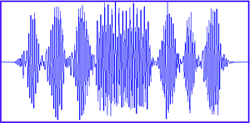|
In 2005 I posted a site explaining the differences between the five major sounds of
Pacific-slope Flycatcher (Empidonax difficilis)
and
Cordilleran Flycatcher (Empidonax occidentalis),
the species that were split out from the "Western Flycatcher"
(Empidonax difficilis in the broad sense) in
1989. The unrevised 2005 version
of that site may still be found at the same place, by following the link.
I am currently in the process of revising it, and modifying slightly the perspective.
Go to Revised WEFL Site to see the work in progress. In particular,
although the "core" populations of the two "species" are distinguishable vocally,
geographically intermediate populations are also intermediate vocally. For the time being,
I recommend against trying to put a name on those birds. Andrew Rush and I
are currently seeking recordings of dawnsong from throughout the range to
determine if the variation in measurable song attributes is continuous. We especially
need recordings from Wyoming, western Colorado, Utah, northern Arizona, and Nevada. We also
need recordings of dawnsong from Mexico, and recordings of the Yellowish Flycatcher (Empidonax flavescens),
Western's very similar-looking and closest relative, from Chiapas through Nicaragua.
|
|
In contrast to the situation with the "Western Flycatcher," the split of the former Traill's Flycatcher into the Alder Flycatcher (Empidonax alnorum) and Willow Flycatcher (Empidonax traillii in the narrow sense) has stood the test of time. They are "good species," and this judgment is uncontroversial. Although they are very similar morphologically and hence hard to tell apart visually, their songs and singing behavior differ profoundly. Cordilleran and Pacific-slope Flycatchers have identical vocal repertoires, and use their repertoires in the same way. Their vocal differentiation is restricted to quantitative variaion in shared song-types. The calls of Alder and Willow Flycatcher are clearly related (though identifiable) and also differ only quantitatively. The major difference in their repertoires is that Willow Flycatcher has three song-types while Alder has only one. This results in Willow singing with variety, while Alder does not. I describe the entire repertoire of both species, and show how to tell them apart at
Traill's Flycatcher sounds.
|

